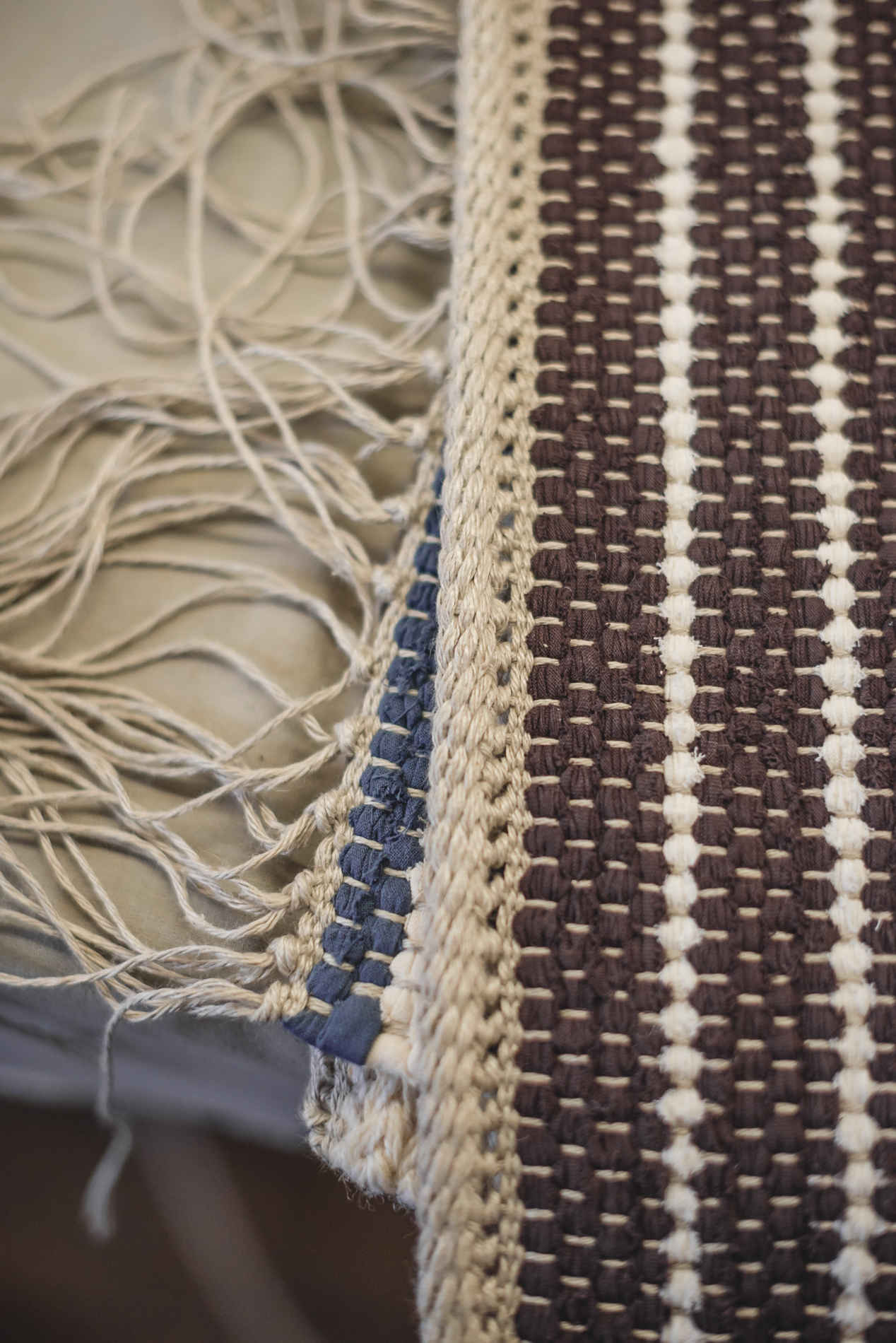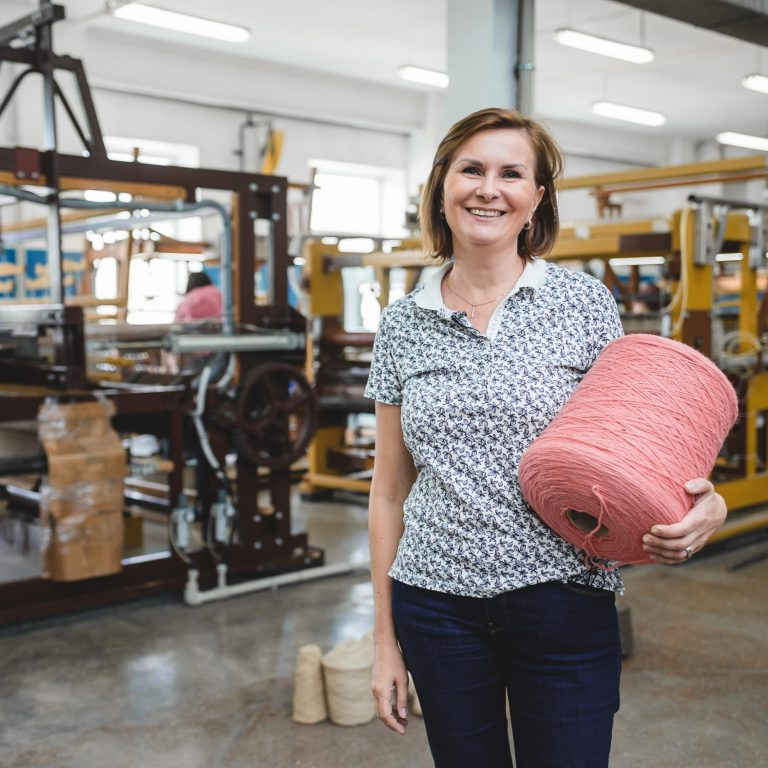This story might have never turned out the way we know it if it wasn’t for the Swedes. In 1782, 1200 Swedes moved to Tavria to found the settlement Staroshvedske. Two centuries later in the early 2000s, a Ukrainian woman, Larysa Boden, travelled to Sweden. These two events may seem unconnected at first glance, but if they hadn’t taken place, then a carpet factory in Liubymivka might not have opened in 2018 and its carpets wouldn’t be sold in 29 countries.
A modern Swedish community lives in Zmiyivka, a village in Tavria not far from the city Khahovka. Zmiyivka has a population of 100 and appears on the spot where the old village Staroshvedske used to exist. The Scandinavian descendants preserved old religious rites of their ancestors. Some people still use the Swedish dialect that was spoken in Sweden during the 18th century. Zmiyivka is near the village Liubymivka, where Larysa Boden and her husband, who is from Sweden, started the carpet factory.This story began twelve years ago:
— Twelve years ago I didn’t care: to start making carpets, candles or soap. The main thing was the ability to provide people in the village with work for the whole year and to be able to sell the product.

Larysa says that she met her future business partners at a party in Sweden. They told her about an astonishing idea to produce carpets by reviving old weaving traditions of Scandinavia, but to do it in Ukraine.

Larysa and her husband went to get acquainted with experienced Swedish weavers. When they saw the process, the couple persuaded the weavers to sell three looms and to come to Ukraine for a couple of months. Life in the Ukrainian village in the Khersonshchyna region was a culture shock for the seventy-year-old Swedish women, but it was the beginning of a long-lasting intercultural cooperation: The women started teaching the Ukrainians their craft. And so, the history of the factory began. Today forty people work there and take orders from all over the world.
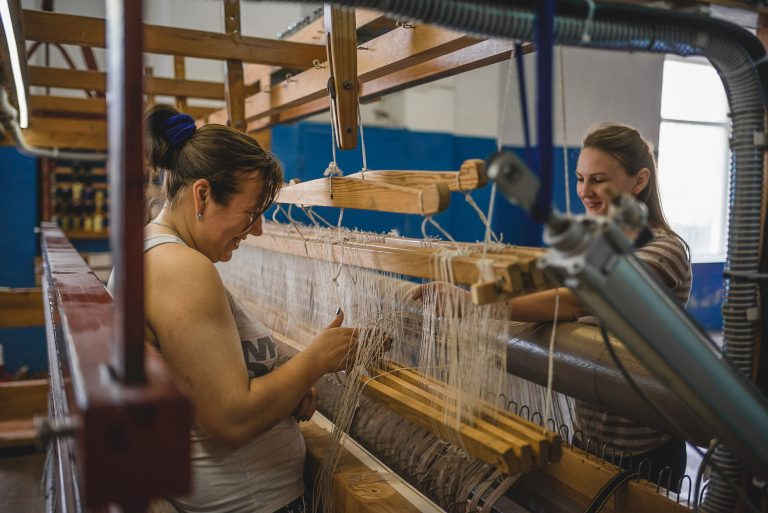
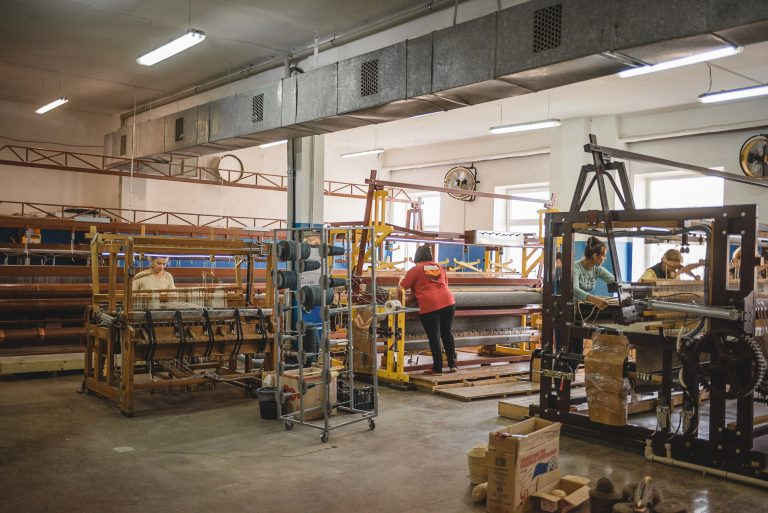
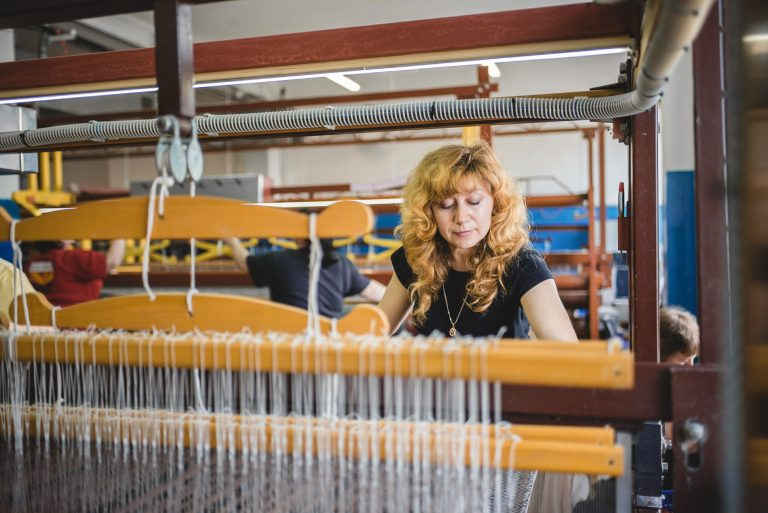
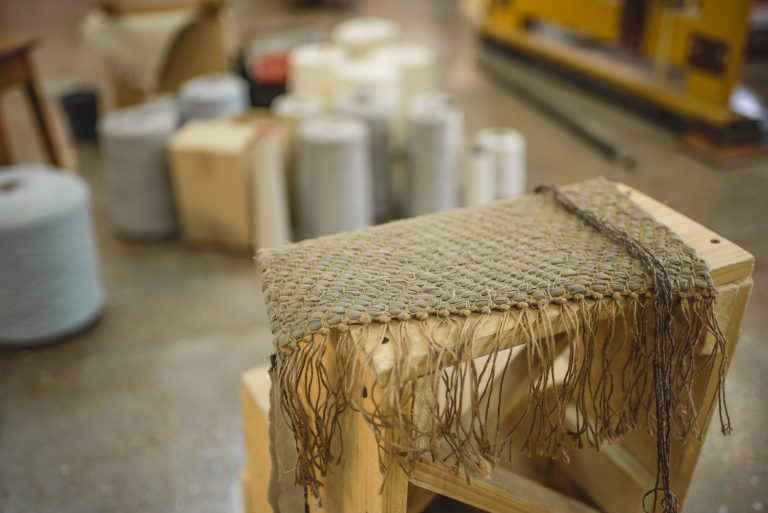
slideshow
The carpets
Carpets from the company Vandra Rugs are produced from cotton since wool is too inflexible and is not fit for manipulations with design. However, over the last five years the factory owners have experimented with the materials. That’s why they purchased three looms from Finland to weave items from 100% wool, though half the carpets are still produced from cotton.
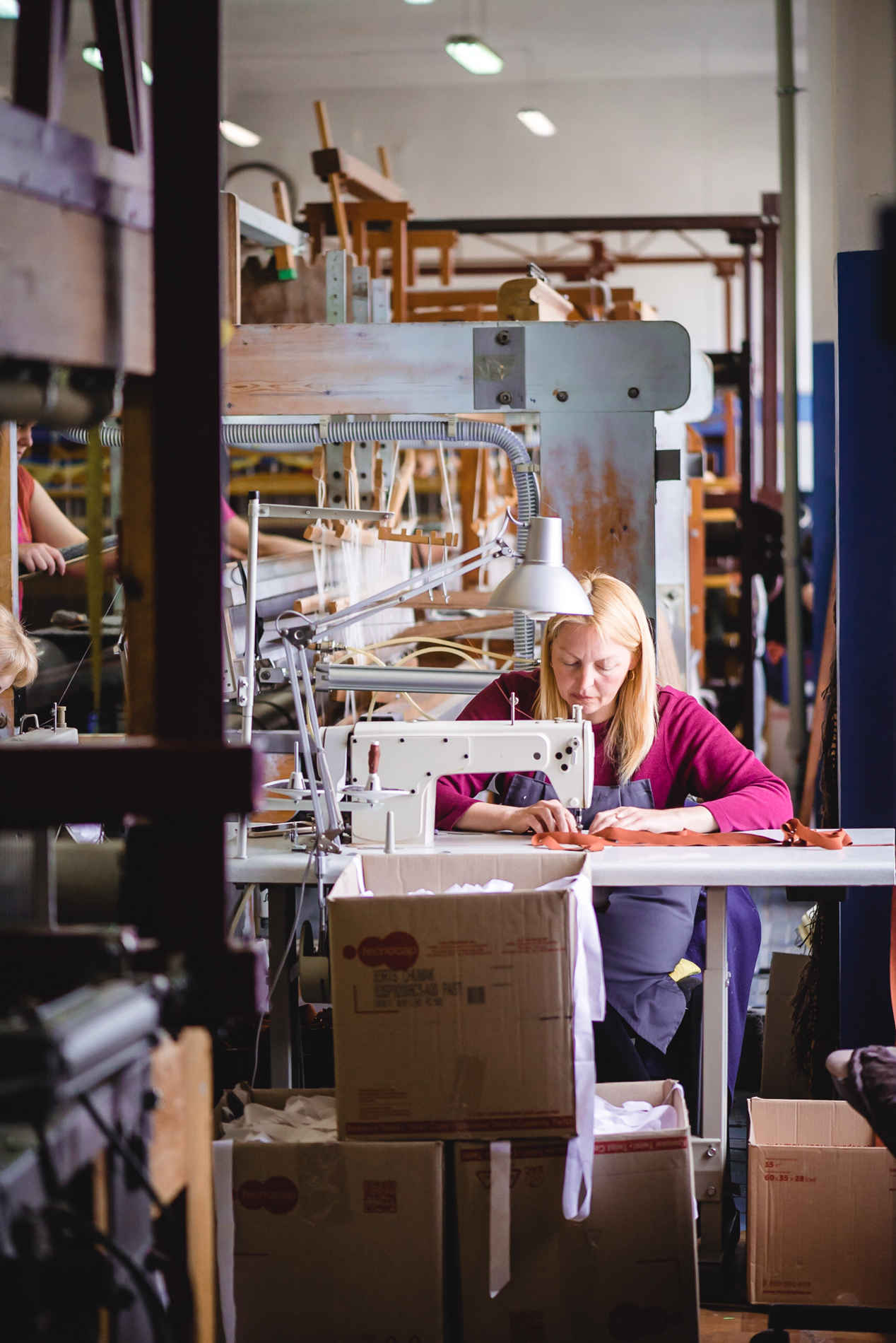
Larysa usually purchases natural cotton, and the workers dye it according to each client’s design. For instance, the design and interior company Svenskt Tenn, which offers fabric and textiles with designs by Austrian-Swedish architect Josef Frank, regularly orders carpets from Liubymivka for their interiors:
The idea of using fabric for carpets dates back to very old times. Our grandmothers were making rags and “riadnushka” (a rug similar to Indian dhurry). They were made out of old clothes that were torn apart and were sewn together in a form of a throw rug.
It was Josef Frank who started using old technologies and leftovers of fabrics to create modern designs in the 20th century. In the 1930s he created his unique style, but in the 50s and 60s the Scandinavian textile industry faced downsizing since using materials and the labor force of other countries was way cheaper. Larysa Boden shares with us the real reasons for economic cooperation between wealthier countries and Ukraine:
Nowadays, even Turkish production has moved to Kakhovka because an average salary of a garment worker in Turkey is 700 euro. Ukraine still has a big potential for growth. All labor-intensive processes are located in places of a cheap labor force, unfortunately. Another thing is that our workers are quite enduring, and they will work day and night to finish the order that is due on Monday morning, unlike a production somewhere else like Belgium where it will be hard to get in touch with anyone the Friday before.
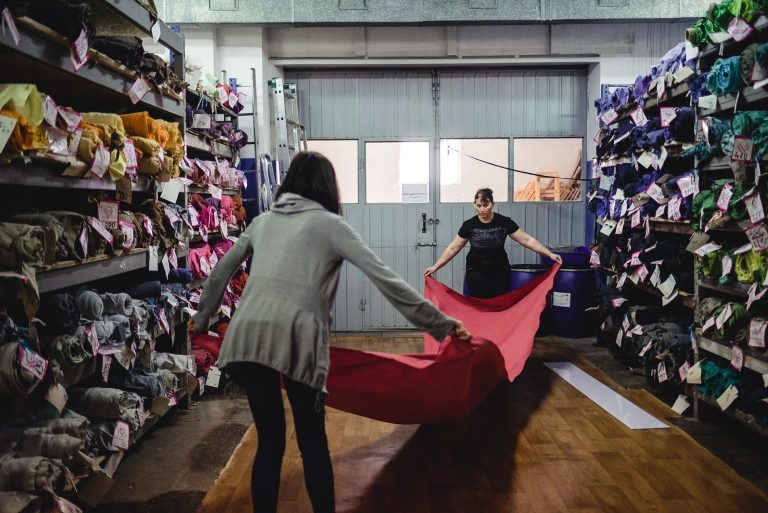
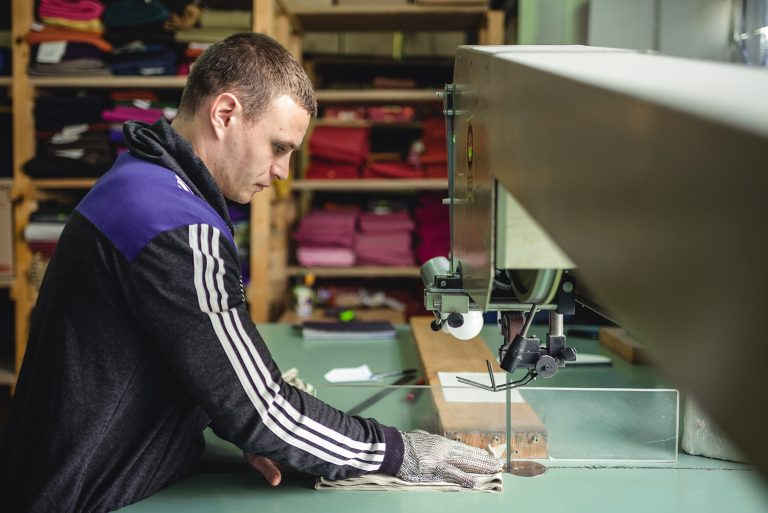
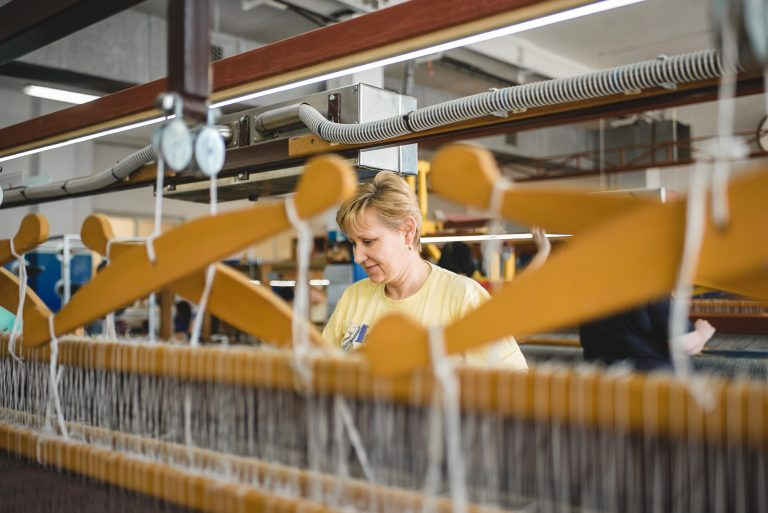
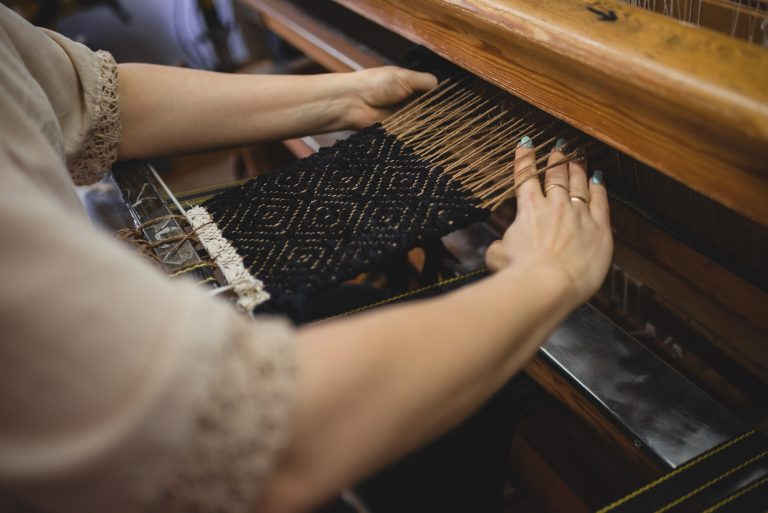
slideshow
Production and international cooperation
The looms are exclusively manually assembled. One loom, designed by a Ukrainian engineer, is used to create carpets that are more than six meters wide. These carpets are ordered by clients from the USA and Great Britain. Traditional Ukrainian looms are equipped with two or four pedals while Liubymivka looms are more complex mechanisms and are equipped with six or eight pedals that allow for various weaving techniques. That’s why each weaver spends half a year training and another half a year working with a more experienced craftswoman.

Though there are eight looms working at the factory currently, they are producing not more than five carpets a week since each item goes through several stages of approval with the client:
— The peculiarity of our business is that in reality, we are a weaving studio. We do not have mass production of carpets that at some point someone will buy at a store. All our products were created by someone, and perhaps they were based on some samples.. Our clients come up with their own combinations and designs very often. Despite the fact that visually a carpet might look simple, there is somebody’s creativity in each of them.

The factory works with international architects and designers, especially with Scandinavian ones. Samples are sent to 15 to 16 countries three times a week:
— In every third “Better homes and gardens” magazine, we can find a reference to our carpets. We do not know our clients since they get their order through the distributors, but we can see the name of the architect.
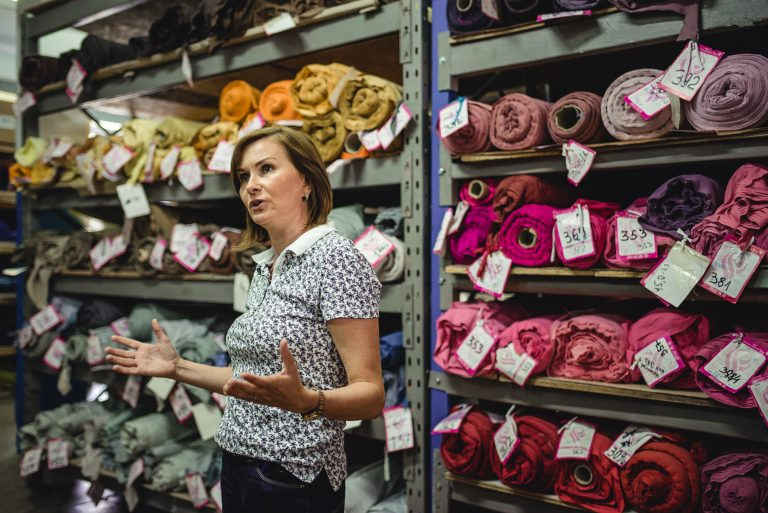
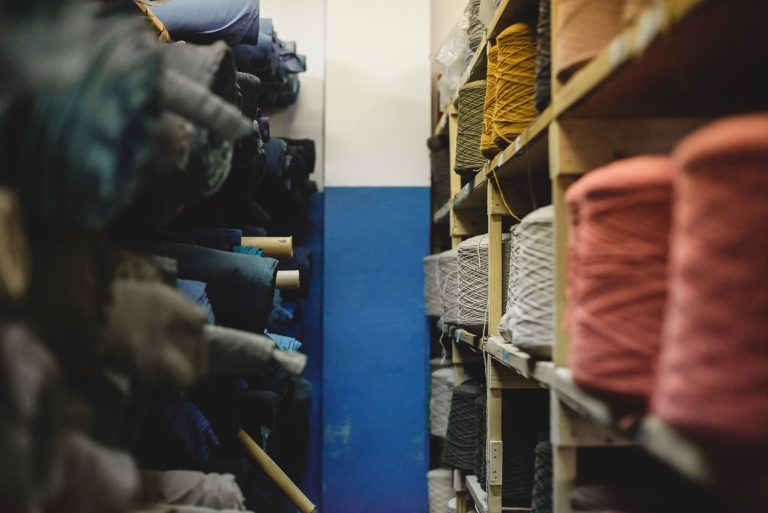
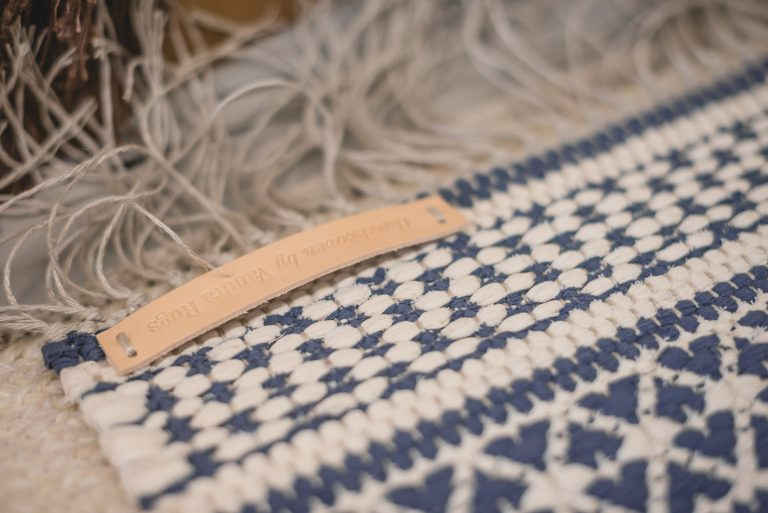
slideshow
Cultural exchange between Ukraine and Sweden on the territory of Tavria takes place all the time. Two times a year, tourists from Sweden visit the factory in Liubymivka — they are interested in the items of Swedish culture. They go to Zmiyivka, first of all, where a significant historic layer connected to the life of Swedish settlers is preserved. The company Chumak, founded by Swedish entrepreneurs in 1993, is located in Kakhovka. There are tourists from both the old and young generations of Swedes. The carpet production is of great interest to school students from local schools as well.
We had a photo session since we needed photos for our Instagram, for our partners. We have clients that ask us to send them photos of our studio and weavers that made their carpet. During the day a photographer arrived and took photos of the weavers and production.
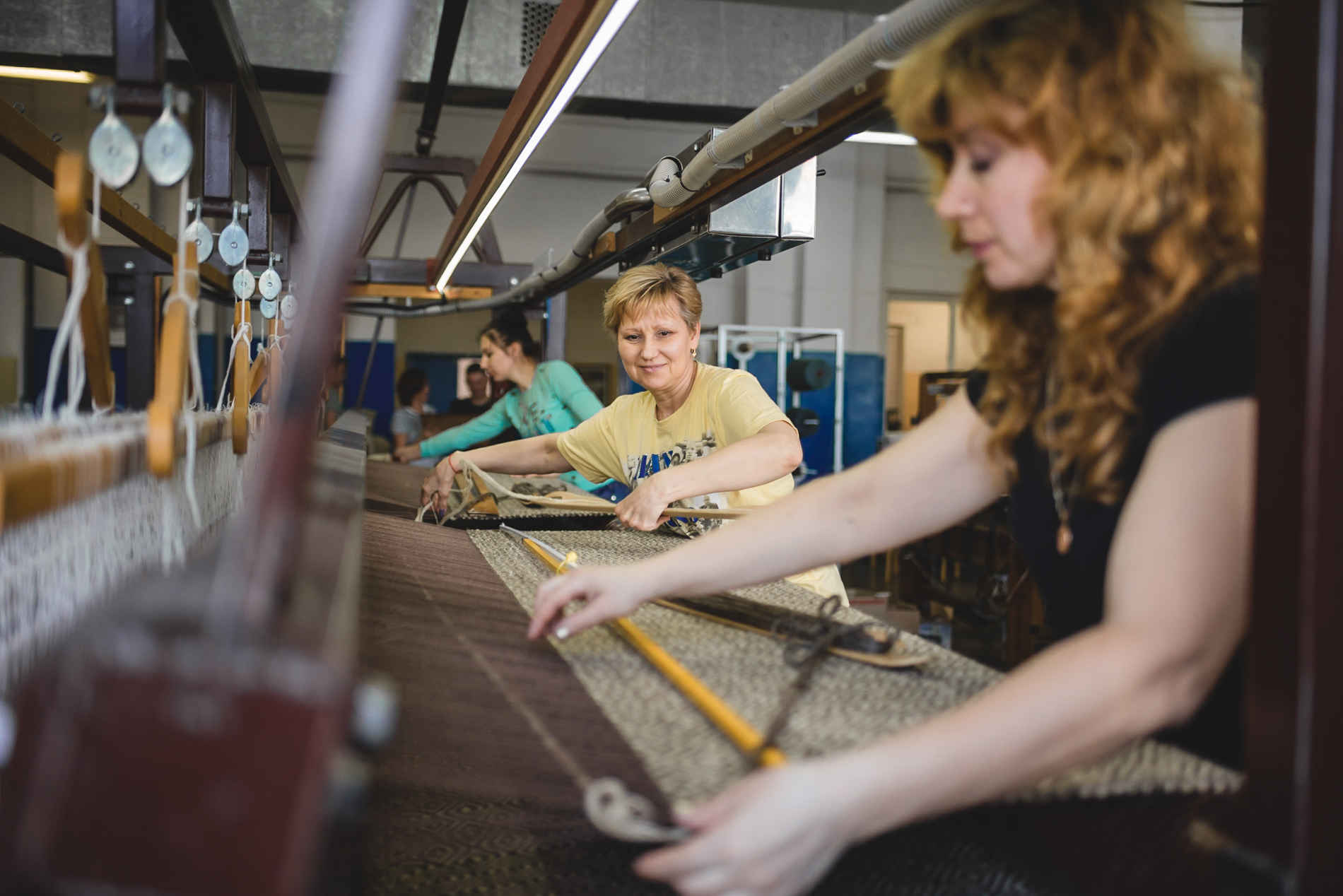
Sales in Ukraine
Though Larysa Boden’s factory focuses on exports, in 2018 they tried to sell carpets in Ukraine for the first time. These carpets were made from fabric scraps. In the production process there is leftover fabric that was dyed for the particular client.So that these small fabric pieces didn’t sit around, the company decided to find distribution channels in Ukraine for this style of carpet.
Ms. Larysa says that this project is not commercially successful yet, since the high-quality product is not cheap and the company is not looking for a compromise at this point:
A carpet out of pure wool can’t cost, for example, 3000 hryvnias in Ukraine. Because the wool itself costs 12 to 15 US dollars for a kilogram. The wool has to be dyed and then woven. How much can one square meter of such carpet cost? Well, one square meter of carpet requires two and a half kilograms of wool. In addition, you need to have a base. We use Belgian flax for our carpets since it’s not stretchy, keeps the shape well and is pretty elastic. We had an idea: Let’s make it cheaper! But then comes an understanding that the quality will suffer greatly. That’s why if we can make a product of high quality for Europe and we already have orders for July, why would we disperse our attention and try to make something cheap and not good quality if we have a client that is ready to pay for high quality?
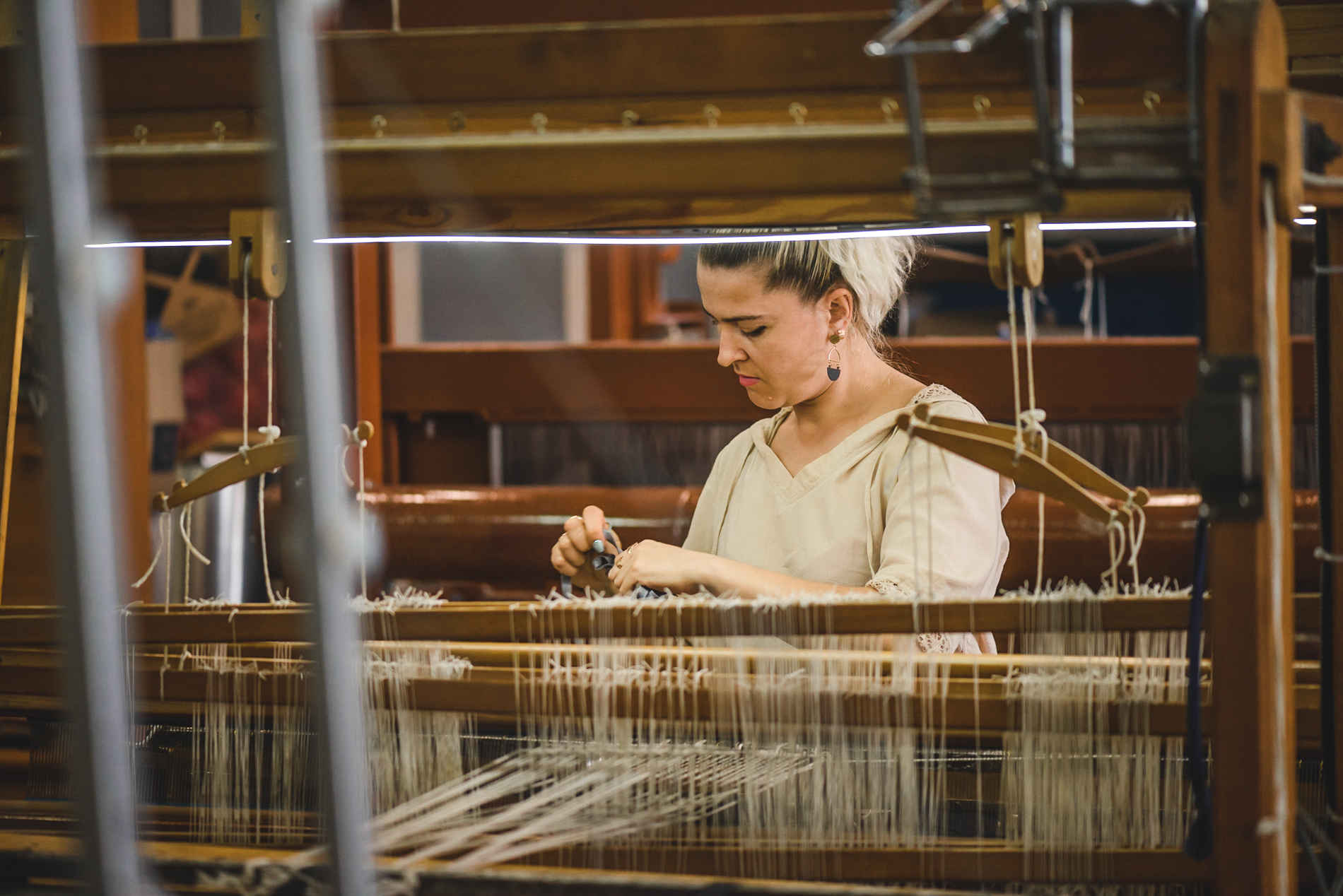
When asked if there are similar productions in Ukraine, Larysa says that competition is not an accurate word to characterize the market. What singles out the products of Larysa’s factory is the partnerships and orders:
— These are not spacecrafts — there are no high technologies involved. Anyone can buy a loom and start making carpets like ours.
Larysa Boden, just like other creators of unique carpets, is looking for clients abroad since Ukrainian consumers are not ready for a product like hers. The desire to create a high-quality product, to do it in Ukraine and to help each other move forward dunites all women entrepreneurs.
